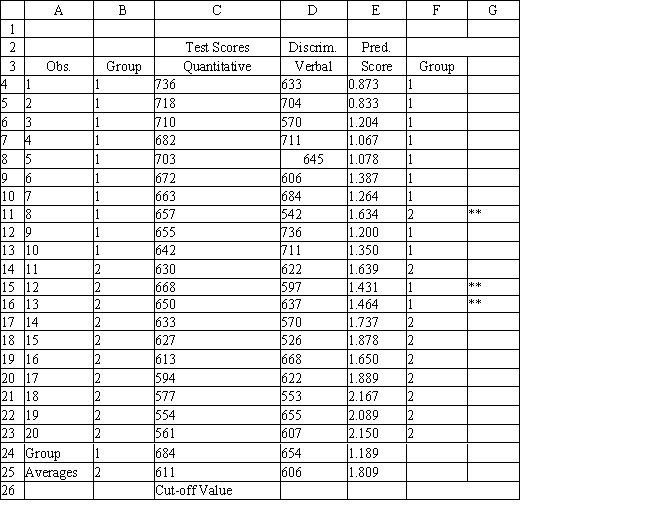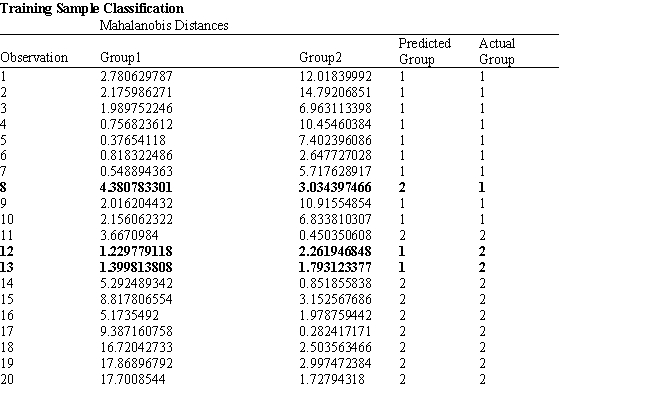Exhibit 10.1
The following questions are based on the problem description and the output below.
A college admissions officer wants to evaluate graduate school applicants based on their GMAT scores, verbal and quantitative. Students are classified as either successful or not-successful in their graduate studies. The officer has data on 20 current students, ten of whom are doing very well (Group 1) and ten who are not (Group 2) . 




-Refer to Exhibit 10.1. What is the verbal test score value of the group centroid for group 2?
Definitions:
Mayeroff
A philosopher known for his work on caring and the significance of nurturing relationships in personal development.
Humanness
The quality or condition of being human, encompassing human attributes, behaviors, and feelings.
Living Caring
The practice of nurturing and supporting life in a compassionate and attentive manner.
Authentic Presence
The genuine and transparent engagement of an individual in the moment, often emphasized in therapeutic and caring relationships.
Q5: Which of the following best describes queuing
Q17: Suppose that the first goal in a
Q29: A company makes 2 products A and
Q53: Simulation is used to<br>A) find possible worst
Q62: Data mining tasks fall in the following
Q62: Which of the following is true regarding
Q78: A test sample is often used to
Q79: Refer to Exhibit 9.3. Interpret the meaning
Q102: Refer to Exhibit 14.13. What formula should
Q103: An investor is considering 2 investments, A,